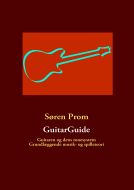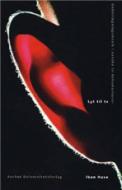Bach Counterpoint
128,75 kr
106
ISBN
9788743007647
'Bach Counterpoint - Two-part invention' is a textbook in two volumes.
The aim of this book is to explain Bach's compositional methods in an accessible manner, using methods and tools specially developed for this purpose.
The two-part Bach inventions are a natural starting point, and have certain clear advantages when used to illustrate Baroque contrapuntal composition; it is in two parts, its form is clear, and it contains the same compositional techniques as the fugue, such as countermelody/counterpoint, sequences and motivic development.
The book develops a method of understanding and composing inventions, based on a throrough analysis and exploration of Bach's inventions. To illustrate the progression and stringency of this method, this book has been structured as an insight into the 'compositional workshop'. Through analyses and music examples, the process of creation is illustrated, and throughout the book, how and why musical decisions are made are explained.
Volume I will mainly focus on the first section of the form, up to the entry of the theme in the dominant or tonic parallel tonality. While relatively short, this willprove sufficient in introducing Bach's music. The exercises in this volume include writing counterpoint to a given melody, composing a longer sequence that concludes in a cadence in the new tonality, and will also cover topics such as melodic development, rhythm, and the treatment of dissonance in the style of Bach.
In Volume II, instruction in compositional development continues with the analysis and composition of complete inventions, including the first section of the form, which is covered in this volume.
The aim of this book is to explain Bach's compositional methods in an accessible manner, using methods and tools specially developed for this purpose.
The two-part Bach inventions are a natural starting point, and have certain clear advantages when used to illustrate Baroque contrapuntal composition; it is in two parts, its form is clear, and it contains the same compositional techniques as the fugue, such as countermelody/counterpoint, sequences and motivic development.
The book develops a method of understanding and composing inventions, based on a throrough analysis and exploration of Bach's inventions. To illustrate the progression and stringency of this method, this book has been structured as an insight into the 'compositional workshop'. Through analyses and music examples, the process of creation is illustrated, and throughout the book, how and why musical decisions are made are explained.
Volume I will mainly focus on the first section of the form, up to the entry of the theme in the dominant or tonic parallel tonality. While relatively short, this willprove sufficient in introducing Bach's music. The exercises in this volume include writing counterpoint to a given melody, composing a longer sequence that concludes in a cadence in the new tonality, and will also cover topics such as melodic development, rhythm, and the treatment of dissonance in the style of Bach.
In Volume II, instruction in compositional development continues with the analysis and composition of complete inventions, including the first section of the form, which is covered in this volume.
| Undertitel | Two-part invention I |
|---|---|
| Forfatter | Martin Lohse;Martin Lohse |
| Forlag | Det Kongelige Danske Musikkonservatorium |
| Indbinding | Paperback |
| Product Type | paperback |
| Thema koder | Barok, Musikteori og musikvidenskab, Tidlige 18. århundrede, 1700 til 1750, Tyskland |
| Varegruppe | Musik & Film |
| Ekspedition | DBK |
| Udgivelsesdato | 7. jan. 2019 |
| Sideantal | 132 |
| Bredde | 216 |
| Højde | 280 |
| Dybde | 8 |
| Vægt | 390 |
| Første udgave | 2018 |
| Oplagsdato | 8. jan. 2019 |
| Oplag | 2 |
| Udgave | 1 |
| ISBN-13 | 9788743007647 |
| ISBN-10 | 8743007643 |
| EAN | 9788787131063 |
| Sprog | eng |
| Orignalsprog | eng |
| Illustreret i farver/sh | Nej |




